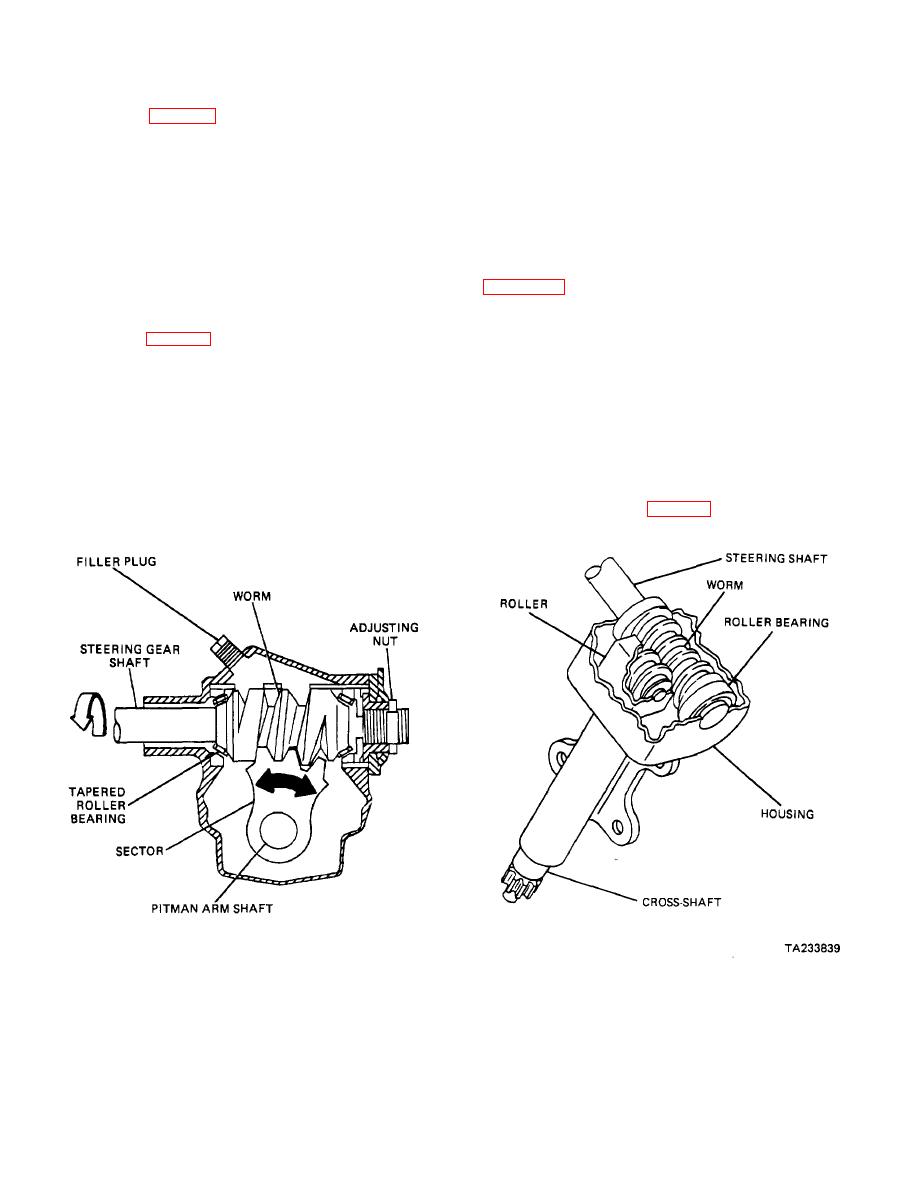
| Tweet |

Custom Search
|
|

|
||
 TM 9-8000
larger at one position than another and therefore the road
Section II. 33-4.Worm andSectorType.In the worm and sector
wheels are turned faster at certain positions than at
steering gear (fig. 33-7) the pitman arm shaft carries a
others. At the center or straight ahead position, the
gear that meshes with the worm on the steering gear
steering gear ratio is high, giving more steering control.
shaft. Generally, only a sector of a gear is used because
However, as the wheels are cramped or turned to the
it turns through an arc of approximately 70 degrees. The
side, the ratio decreases so that the action is much more
steering wheel turns the worm on the lower end of the
rapid. This design is very helpful for parking or for
steering gear shaft, which rotates the sector and the
maneuvering the vehicle.
pitman arm through the use of the shaft. The worm is
assembled between tapered roller bearings that take
33-6. Cam and Lever Type. A cam and lever steering
both thrust and load. An adjusting nut or plug is provided
gear in which the worm is known as a cam, is shown in
for adjusting the end play of the worm. Some means of
adjusting the end play of the cross-shaft also is provided.
inner end. This lever carries a stud that engages with the
cam. The stud may be integral or mounted on roller
33-5. Worm and Roller Type. The worm and roller
steering gear (fig. 33-8) is quite similar to the worm and
steering. As the steering wheel is turned, the stud moves
sector type except that a roller is supported by ball or
up and down on the cam and carries the lever with it to
roller bearings within the sector mounted on the pitman
rotate the pitman arm shaft. The pitch of the cam is not
arm shaft. These bearings assist in reducing sliding
constant, therefore the lever moves more rapidly as it
friction between the worm and sector. As the steering
nears either end of the cam. Maximum leverage occurs
wheel turns the worm, the roller turns with it but forces
at the straight ahead position when the stud engages the
the sector and the pitman arm shaft to rotate. The
fine pitch section of the cam. This makes the initial
hourglass form of worm, which tapers from both ends to
turning of the wheels easier. Therefore, a variable ratio
the center, affords better contact between the worm and
is obtained with cam and lever steering. A twin lever
roller at all positions. It provides a variable ratio to permit
provided with two studs (fig. 33-9) is used on a design for
faster and more efficient steering. Variable ratio means
heavier vehicles
that the ratio is
Figure 33-7. Worm and Sector Steering Gear
Figure 33-8. Worm and Roller Steering Gear
33-6
|
||
 |
||